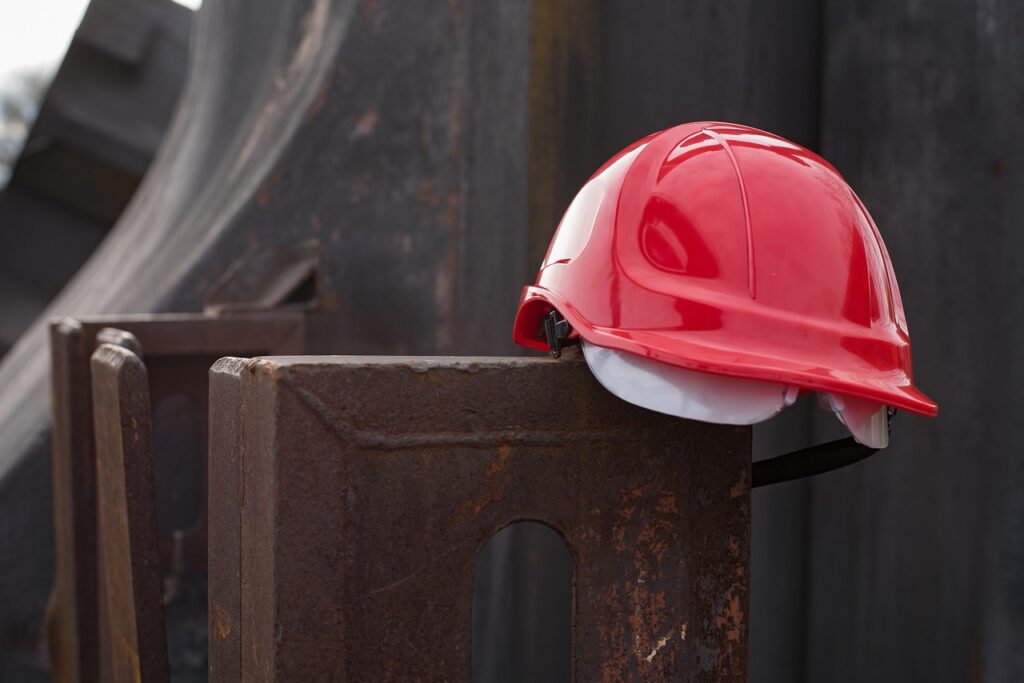Discover why safety helmets are crucial in mining! Learn how they protect workers, reduce risks, and save lives underground.
The Importance of Safety Helmets in Mining
Mining is one of the toughest and most dangerous jobs in the world. Every day, thousands of miners work deep underground, surrounded by heavy machinery, falling debris, and unpredictable conditions. It’s a high-risk environment, and one small mistake can mean serious injury—or worse.
That’s why safety gear, especially safety helmets, isn’t just an accessory—it’s a lifesaver. A properly worn helmet can be the difference between walking away from an accident and suffering a life-threatening head injury.
Let’s dive into why safety helmets in mining are non-negotiable and how they protect workers from everyday hazards. Also Read……..
Why Safety Helmets Matter in Mining
A safety helmet isn’t just about following workplace rules—it’s about survival. Miners face several hazards that make helmets a necessity:
✅ Falling Rocks & Debris: Mines are unpredictable. A single loose rock can cause serious head injuries if workers aren’t protected.
✅ Collapsing Tunnels: In case of a cave-in, a helmet helps protect against impact injuries.
✅ Low Ceilings & Tight Spaces: Underground tunnels often have low clearance, and bumping your head is common. A helmet prevents cuts, bruises, and concussions.
✅ Equipment Accidents: Heavy machinery like drills and conveyors can swing unexpectedly, making helmets essential.
✅ Electrical & Heat Hazards: Some helmets have insulation properties, protecting workers from electric shocks and extreme temperatures.
Bottom line? If you’re in mine, you need a helmet—no exceptions.

What makes a good mining helmet?
Not all helmets are created equal. A regular construction helmet won’t cut it in mining. Here’s what makes a good mining helmet:
1. Impact Resistance
A mining helmet needs to absorb impact from falling objects and collisions. Look for helmets made from high-density polyethylene (HDPE) or fiberglass, which are lightweight but incredibly strong.
2. Suspension System
Inside the helmet, there’s a suspension system that acts like a shock absorber. It creates a small gap between the helmet and the miner’s head, reducing the force of an impact.
3. Chin Straps & Secure Fit
A loose helmet won’t help in an accident. A good mining helmet has adjustable straps to keep it securely in place, even if a worker is moving quickly or working in awkward positions.
4. Built-in Lights & Reflective Strips
Mining tunnels can be pitch black. Many helmets come with built-in LED lights or attachment points for headlamps. Reflective strips also help other workers see you in the dark.
5. Heat & Electrical Insulation
Some mines have high temperatures or exposed electrical wiring. Helmets with heat-resistant materials and electrical insulation add another layer of protection.
6. Smart Helmets (The Future of Mining Safety)
Technology is changing everything—including safety helmets. Some modern helmets now come with built-in sensors that detect toxic gases, temperature changes, and even worker fatigue. These “smart helmets” could revolutionize mining safety in the future!
Real-Life Cases: How Helmets Saved Miners’ Lives
If you think safety helmets are just another workplace rule, think again. Here are real-life cases where helmets made all the difference:
🔹 Chile Mining Accident (2010): When 33 miners were trapped underground for 69 days, their helmets protected them from falling debris and kept them safe in cramped conditions.
🔹 South Africa Mine Collapse (2018): A group of miners survived a tunnel collapse because their helmets absorbed most of the impact from falling rocks.
🔹 Routine Accidents: Thousands of miners worldwide avoid serious injuries every year because they wore a helmet. Whether it’s bumping into low ceilings or getting hit by small falling stones, a helmet is a first line of defense.
The Role of Employers in Helmet Safety
Wearing a helmet is one thing, but ensuring every worker follows safety protocols is another. Employers play a huge role in making sure helmets are used properly. Here’s how:
✅ Providing high-quality helmets: Employers must supply certified helmets that meet industry safety standards.
✅ Training Workers: Just giving out helmets isn’t enough. Workers should be trained on how to adjust straps, check for damage, and wear their helmet properly.
✅ Regular Inspections & Replacements: Helmets wear out over time. Employers should inspect helmets regularly and replace any that show signs of damage or weakness. ✅ Enforcing Safety Rules: Workers should never be allowed in hazardous areas without a helmet—even if it’s “just for a minute.”
Common Myths About Safety Helmets
Let’s bust some common helmet myths:
❌ “Helmets are uncomfortable.” Nope! Modern helmets are lightweight and adjustable for a comfortable fit.
❌ “I don’t need a helmet for short tasks.” Accidents don’t wait for convenience—always wear your helmet!
❌ “I’ve never had an accident, so I don’t need one.” Safety isn’t about luck. It’s about being prepared before something happens.
Final Thoughts: Safety Helmets Save Lives
At the end of the day, no job is worth risking your life over. Whether you’re a seasoned miner or just starting out, wearing a safety helmet in mining is the simplest, yet most effective, way to protect yourself.
So next time you put on your helmet, remember—it’s not just part of the uniform. It’s your best defense against the unexpected.
Got any mining safety tips or experiences to share? Drop a comment below! And if you found this post helpful, share it with your fellow workers—because safety should never be a secret. ⛏️🛑